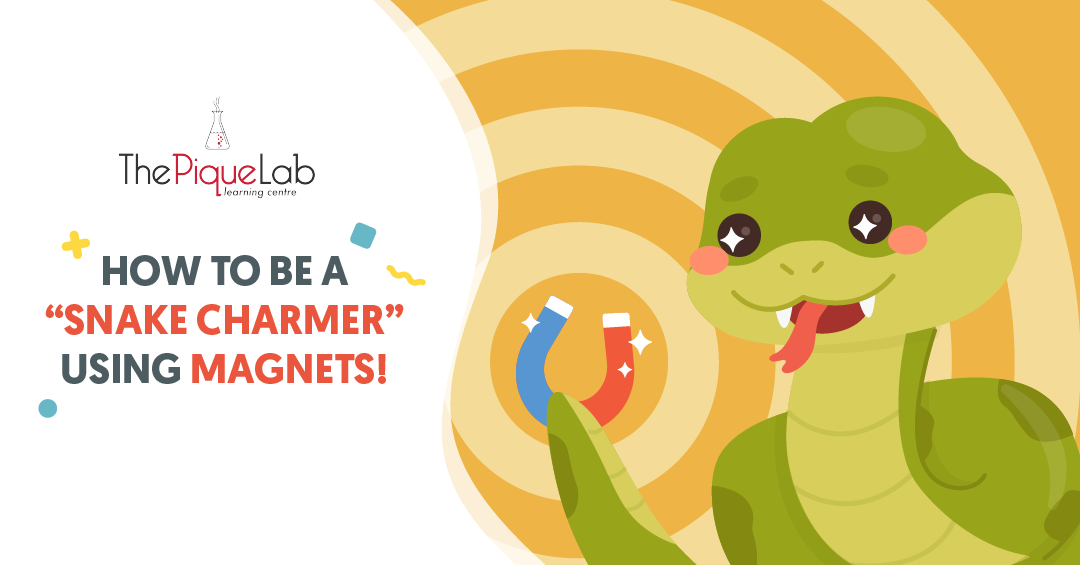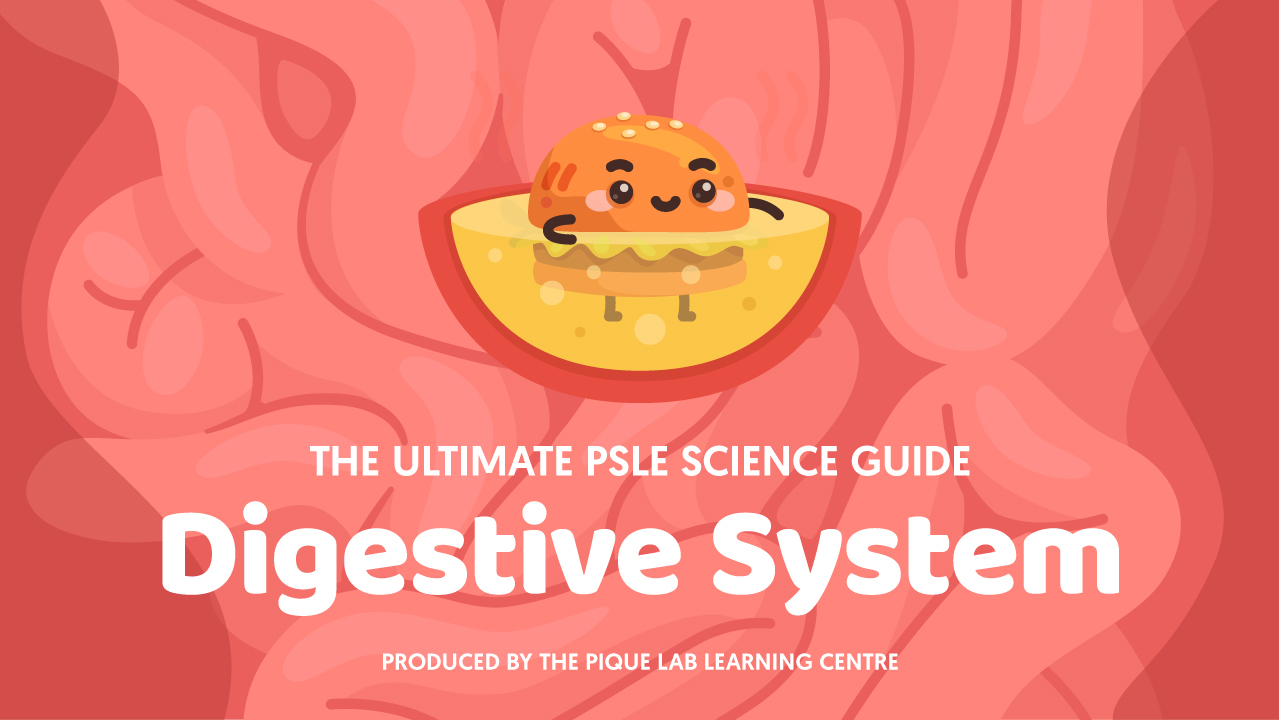Hi Everyone!
What was the last movie you’ve seen? I watched the movie Sahara (2017) recently and there was a scene featuring a cobra dancing to the music from a flute played by a snake charmer.
This ignited my curiosity to learn how snake charming works so I went to do more research on the Internet. Firstly, if you didn’t know, a snake charmer is rumoured to be able to ‘charm’ snakes by playing music from the flute and making the snakes dance. Do you think it is true that the snakes are dancing and swaying to the music? Are the snakes really able to appreciate music?
Read Also:

If you are a firm believer in snakes being able to appreciate and dance to the music, I am sorry to have to burst your bubble today.
🐍 Fun fact: Snakes do not have external ears and cannot hear sounds. Thus, it is impossible for the snakes to be swaying to the music from the flute.

Now, how do we replicate the scenario of snakes swaying to the movement of the flute? I have selected a question on Magnets from the 2016 Pei Hua Presbyterian Primary School (PHPPS) P5 CA1 Examination Paper for discussion that uses the magnetic properties of objects to replicate the scenario of snakes swaying to the movement of the flute and not to the music of the flute.
Question Analysis

Source: Pei Hua Presbyterian Primary School – 2016 P5 CA1 Examination Paper [Q9]
Thought Process
This is a real-life application question based on the activity of snake charming. Real-life application questions are an area where students are generally less confident as the scenarios that are tested are always changing.
So, what is the key to answering real-life application questions then?
I will always advise my students to follow these steps:
- Identify and highlight the keywords/keyphrases in the question.
- Link the keywords/keyphrases to the science concepts involved.
If this sounds abstract to you, don’t worry! Let’s go through how to tackle this question using the above steps together.
Step 1: Identify and highlight the keywords/keyphrases in the question.
“What do you think are the important keywords/keyphrases in the question that we should highlight and focus on?”
Give it a try and see if you’re able to pick out the same keywords/keyphrases as me:
A – a flute with a magnet in it
B – The ‘cobra’ is “a piece of rope with a magnetic material”
C – “By blowing a tune on his flute and moving, he made the ‘cobra’ move along with the music”.
Now that we’ve identified the keywords/keyphrases above, let’s move on to Step 2!
Step 2: Link the keywords/keyphrases to the science concepts involved.
Now that we have identified that the flute contains the magnet and the ‘cobra’ contains a magnetic material, the next question to ask ourselves is:
“When the flute moves to the right, the ‘cobra’ moves to the right. When the flute moves to the left, the ‘cobra’ moves to the left. Why does this happen?”
For the ‘cobra’ (containing a magnetic material) to be moving towards the flute (containing a magnet), it must be that the magnet’s magnetism attracted the magnetic material.
Also, if you’ve realised, the ‘cobra’ (containing a magnetic material) moves together with the flute (containing a magnet) without touching each other. Why does this happen? The magnet’s magnetism must have been able to act at a distance to attract the magnetic material in the ‘cobra’.
Final Analysis
Now that we have identified the concept involved for the ‘cobra’ to move with the ‘flute’, let us identify the correct answer.

Some students may already have chosen Option (1): Unlike poles of two magnets attract. as the correct answer when they encountered the question. They are going to exclaim, “Mr. Derrick, isn’t it true that the unlike poles of two magnets attract? Why is Option (1) wrong?”
Yes, it is true that the unlike poles of magnets attract. However, isn’t it also true that magnetic forces can act at a distance (Option 2) and magnets always come to rest in the North-South direction (Option 4)? So if Options 1, 2 and 4 are all possible, is there a problem with the question? 🤔
No, there is no problem with the question. The question is asking for the concepts used by Zainal in his ‘magic trick’. Thus, you have to choose the relevant concept that allows the ‘magic trick’ to work, and not just any concepts that are correct.
With this in mind, let’s take a look at the options given:
Option (1): Unlike poles of two magnets attract.
Analysis: Were there 2 magnets used in Zainal’s ‘magic trick’? No, the ‘magic trick’ only involves a magnet (of the flute) and a magnetic material (in the ‘cobra’) near to each other. Thus, Zainal’s ‘magic trick’ does not demonstrate the concept that unlike poles of two magnets attract. Option (1) is incorrect.
Option (2): Magnetic forces can act at a distance.
Analysis: As discussed in Step 2 of the thought process, the magnet’s magnetic force acting at a distance to attract the magnetic material is required for this magic trick to work. Option (2) is correct.
Option (3): Magnets attract non-magnetic materials.
Analysis: Magnets attract magnetic materials and not non-magnetic materials. Option (3) is incorrect.
Option (4): Magnets always come to rest in the North-South direction.
Analysis: If we have a bar magnet placed on a piece of Styrofoam that is floating on water or a bar magnet that is freely suspended on one end of a string, we will observe that the bar magnets in both cases will rotate until they eventually come to rest in the North-South direction.



Does Zaihal’s ‘magic trick’ demonstrate this concept? No, it does not! Thus, as Zaihal’s ‘magic trick’ does not show that magnets come to a rest in the North-South direction, Option (4) is incorrect.
Do-It-Yourself
If you wish to be a ‘snake charmer’ like Zaihal and amaze your friends with this ‘magic trick’, you can prepare the following items:
- A flute
- A magnet
- A rope
- A magnetic material
Attach the magnet at the mouth of the flute and attach the magnetic material near one end of the rope and you can now be a ‘snake charmer’ yourself too. Enjoy!
Conclusion
I hope that you have enjoyed reading this article and that you have gained a better understanding on:
- How to tackle real-life application questions on magnets.
- Why snakes actually move and sway to the flute.
Stay tuned for more articles coming your way! 🙂

If you like our methodology, we've some upcoming workshops:







